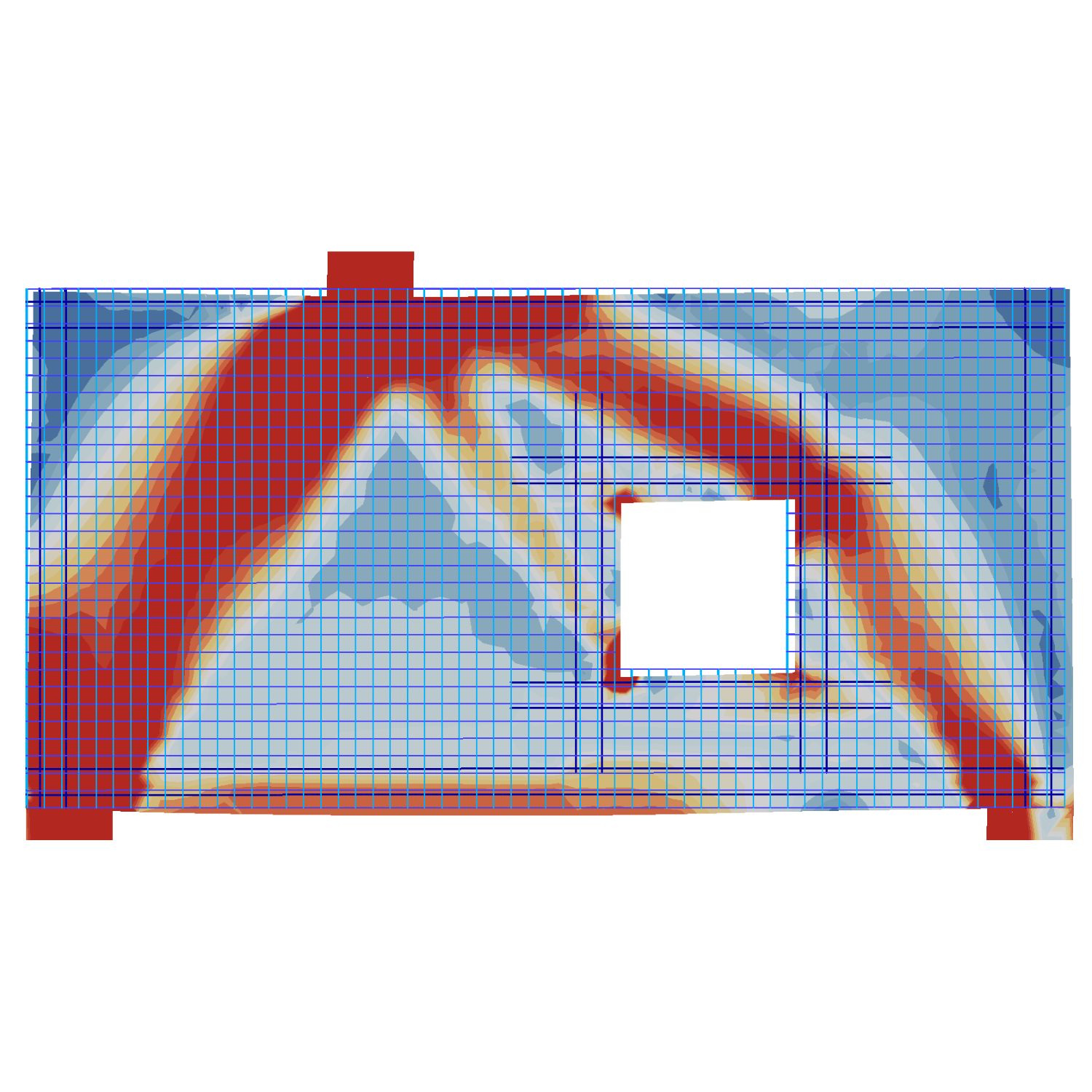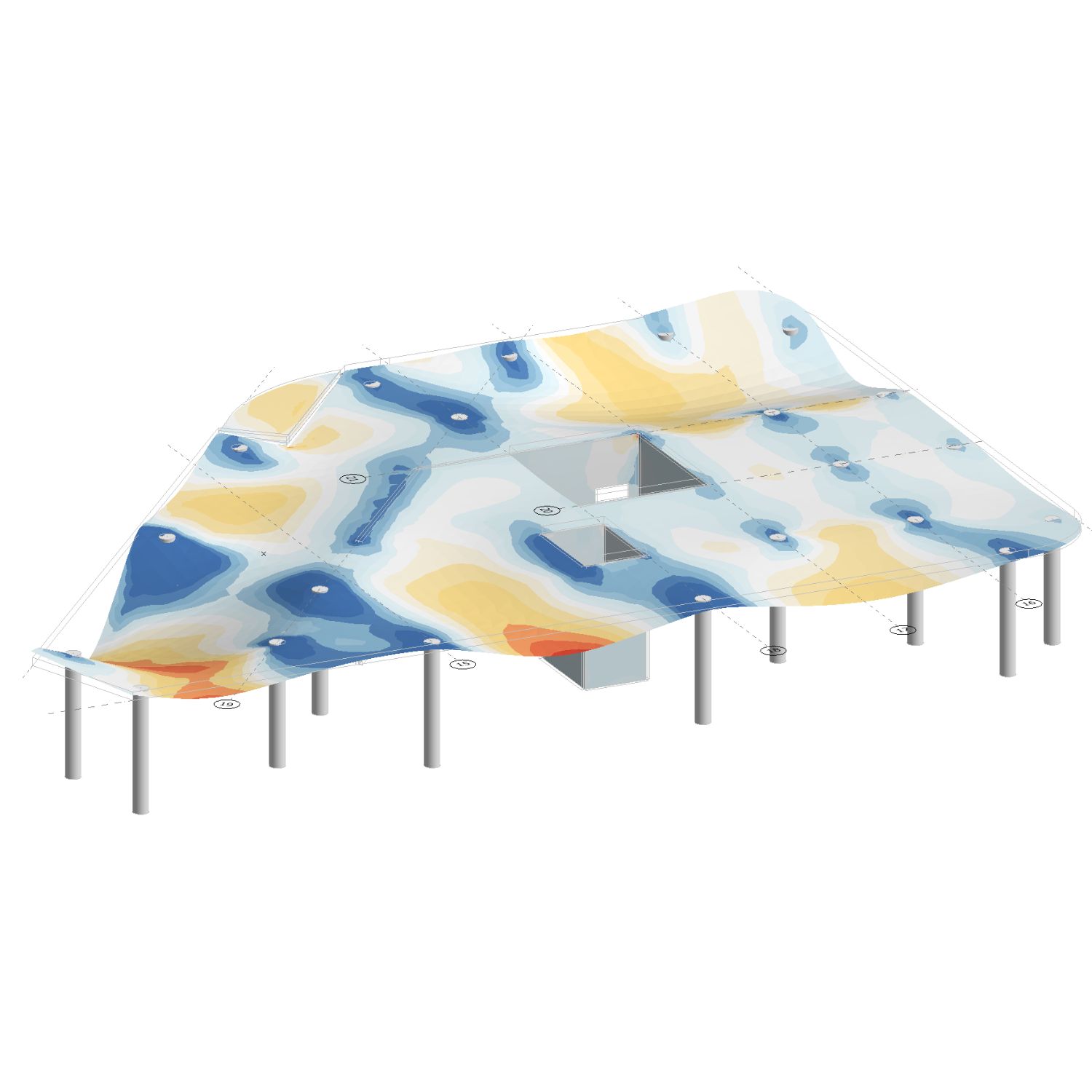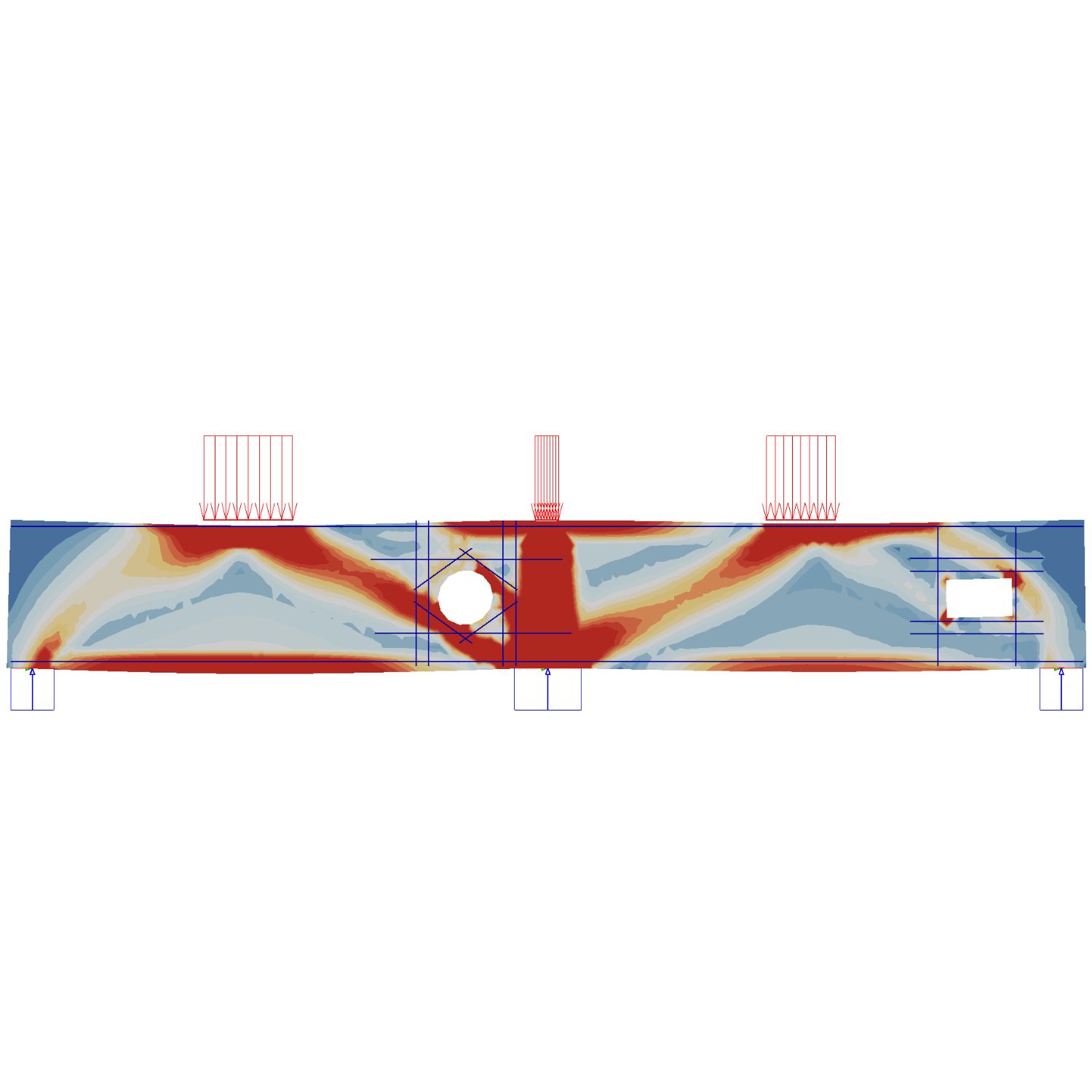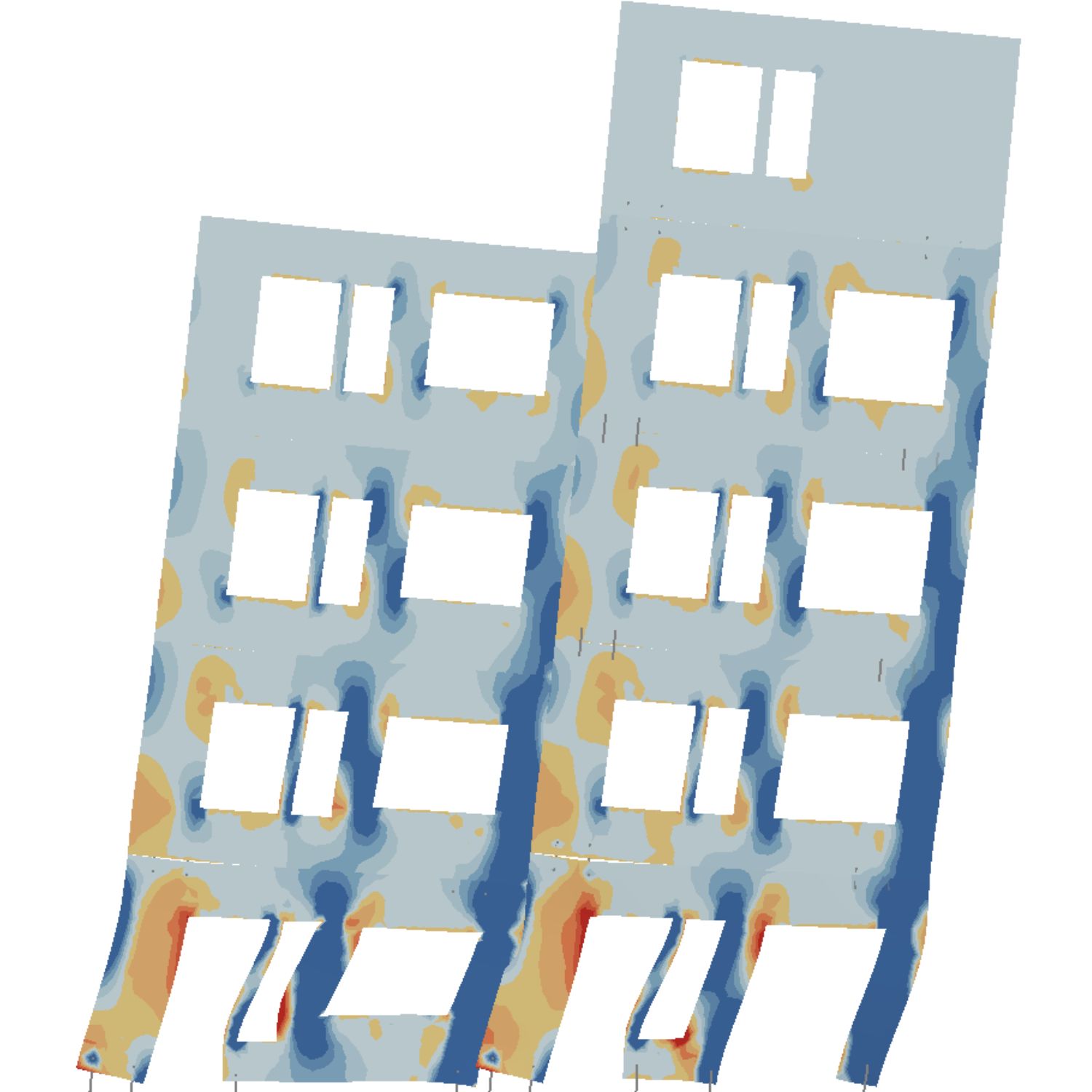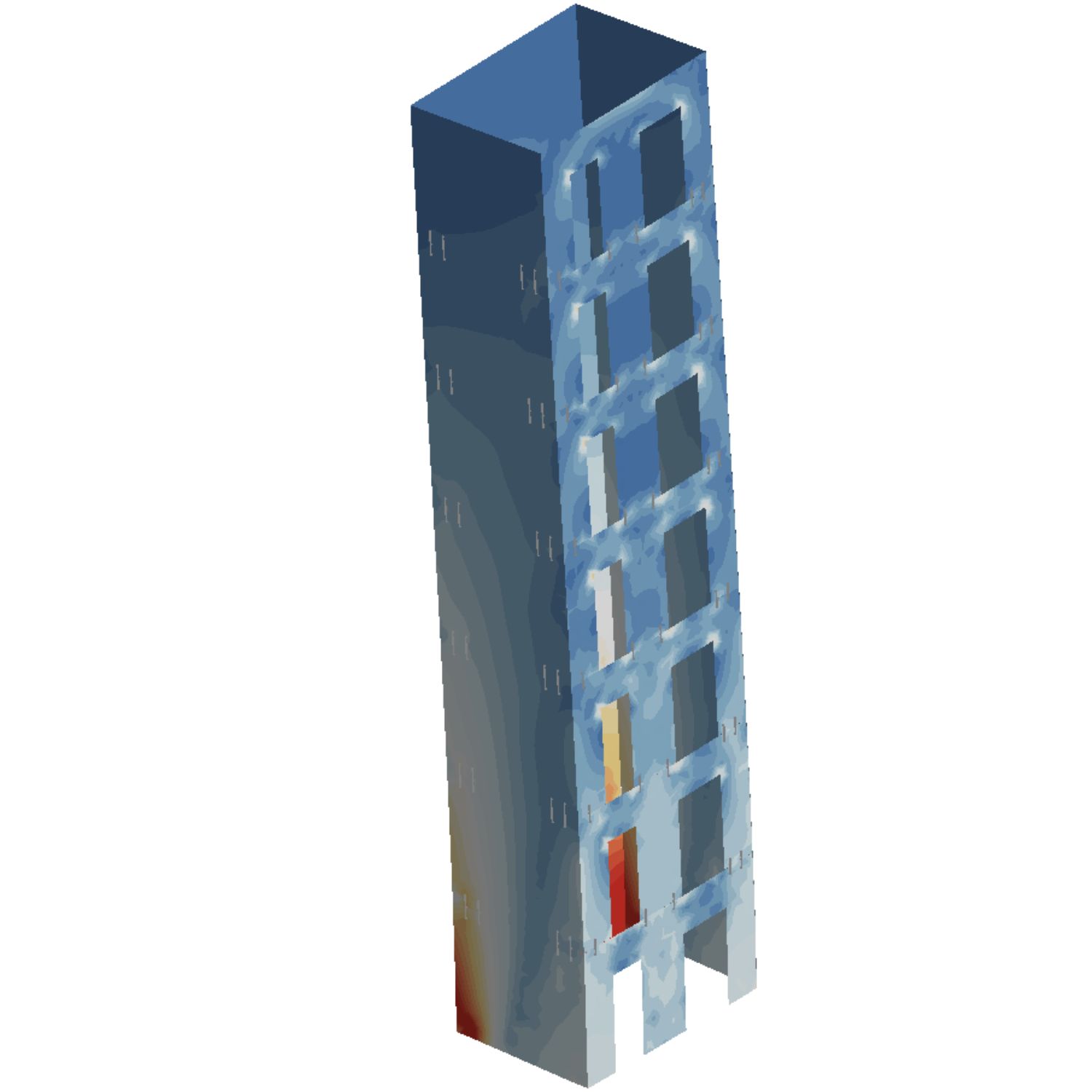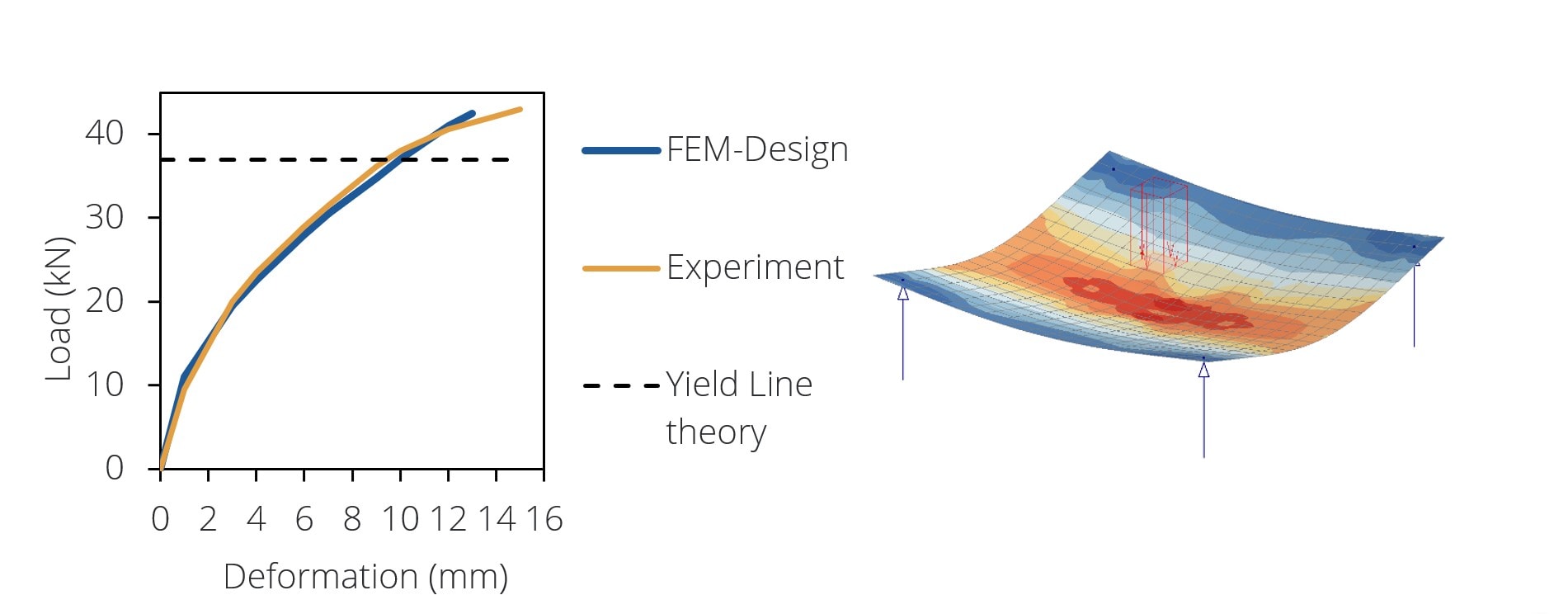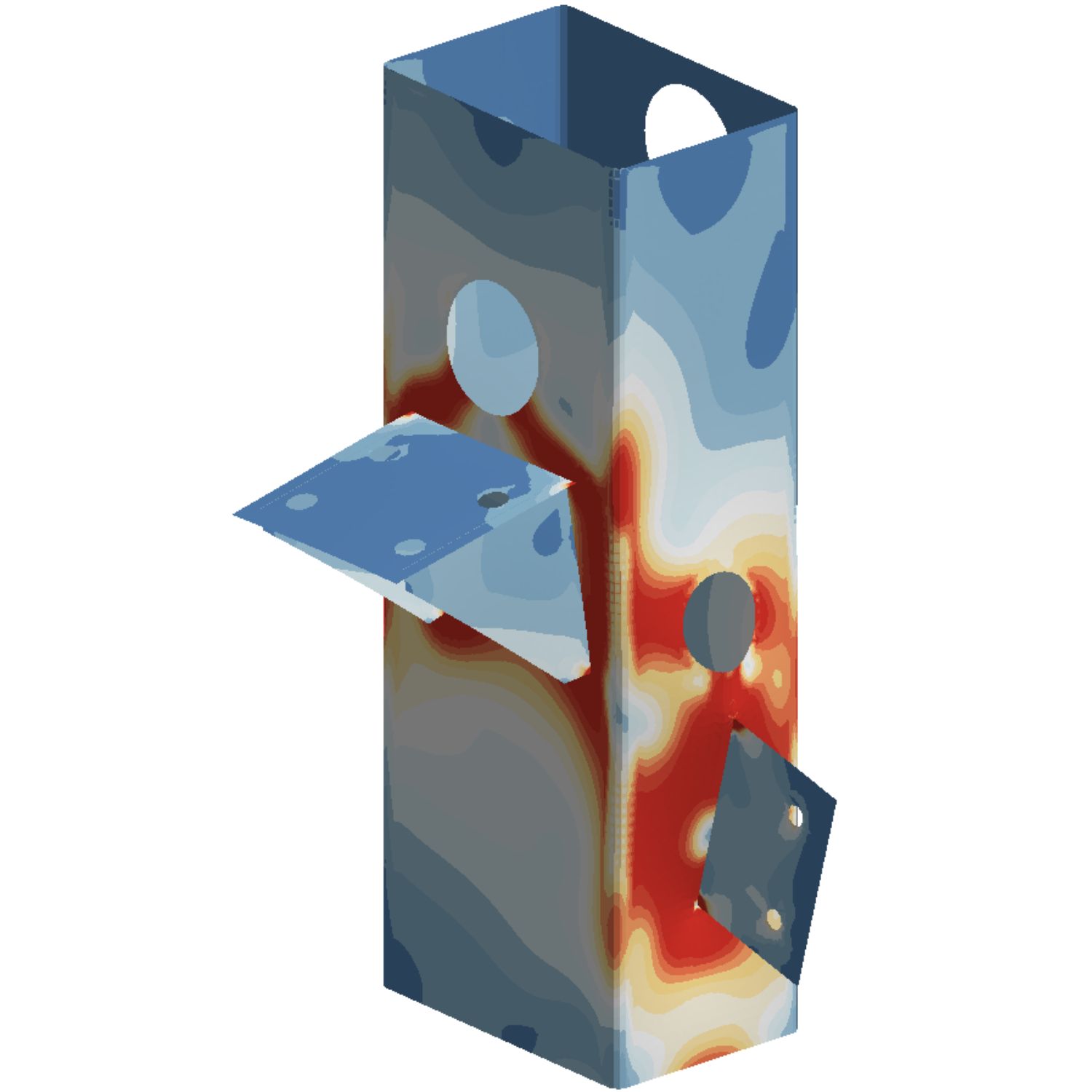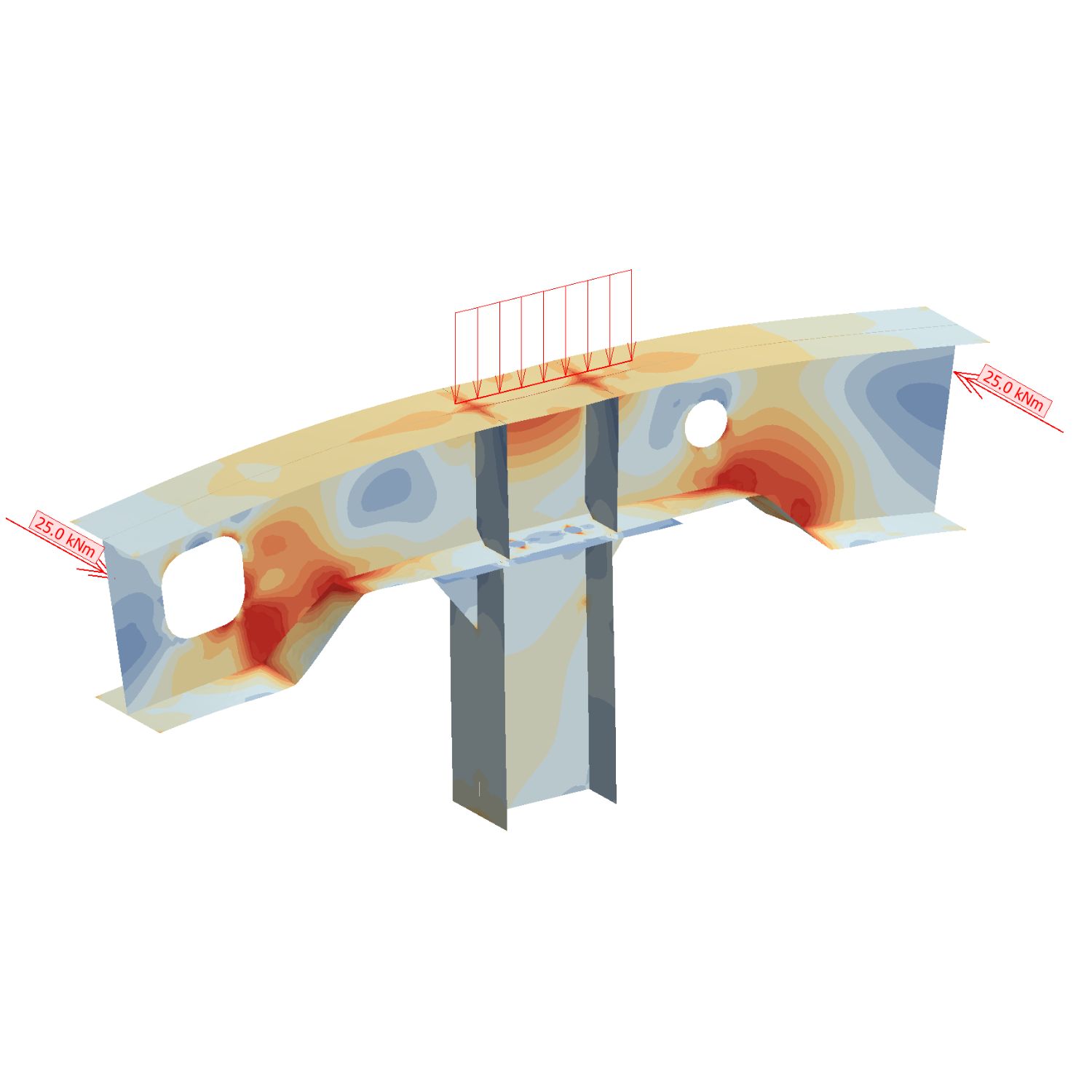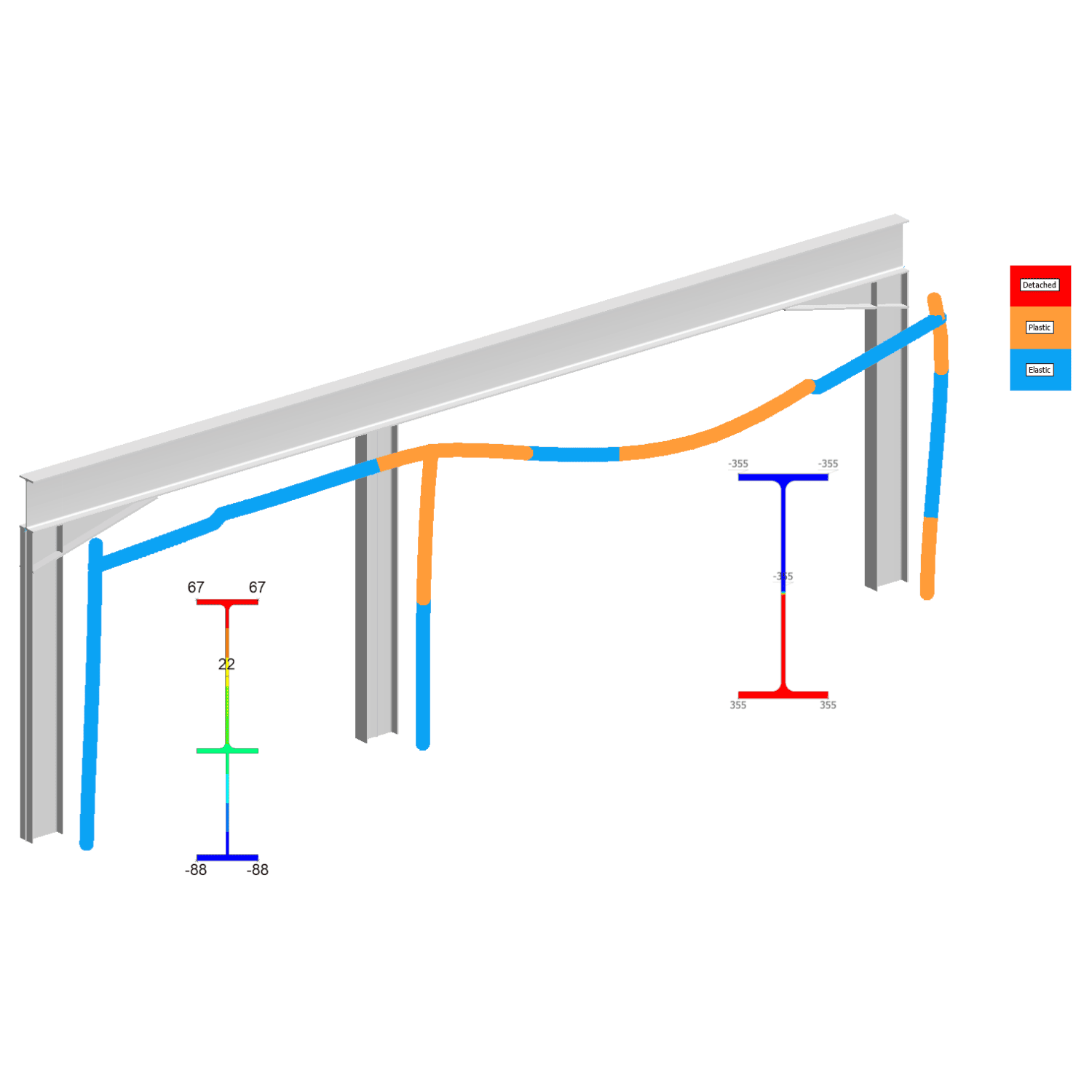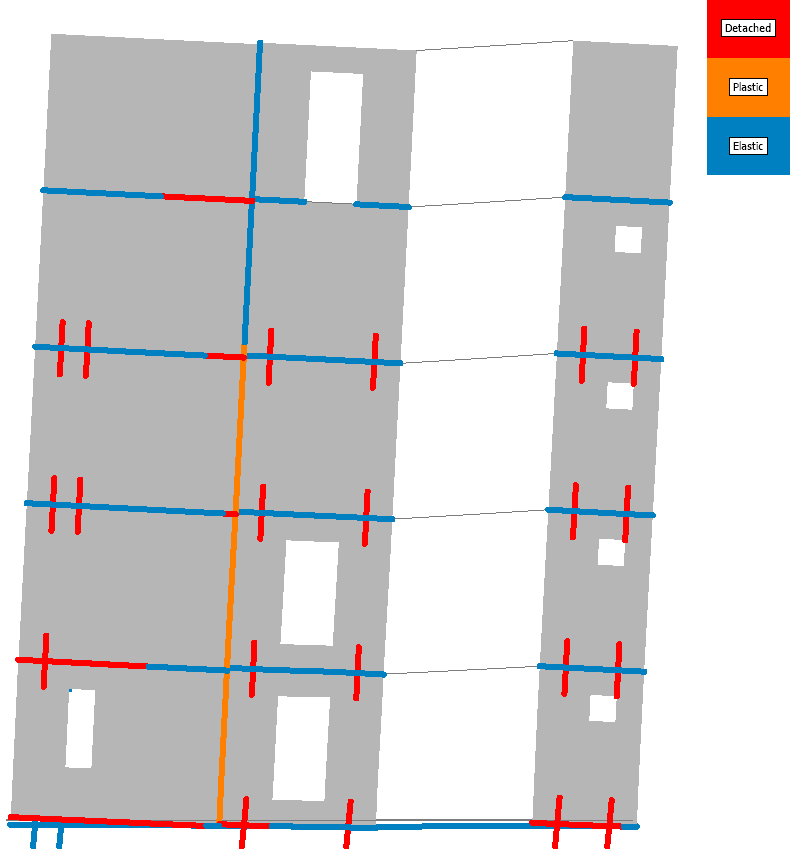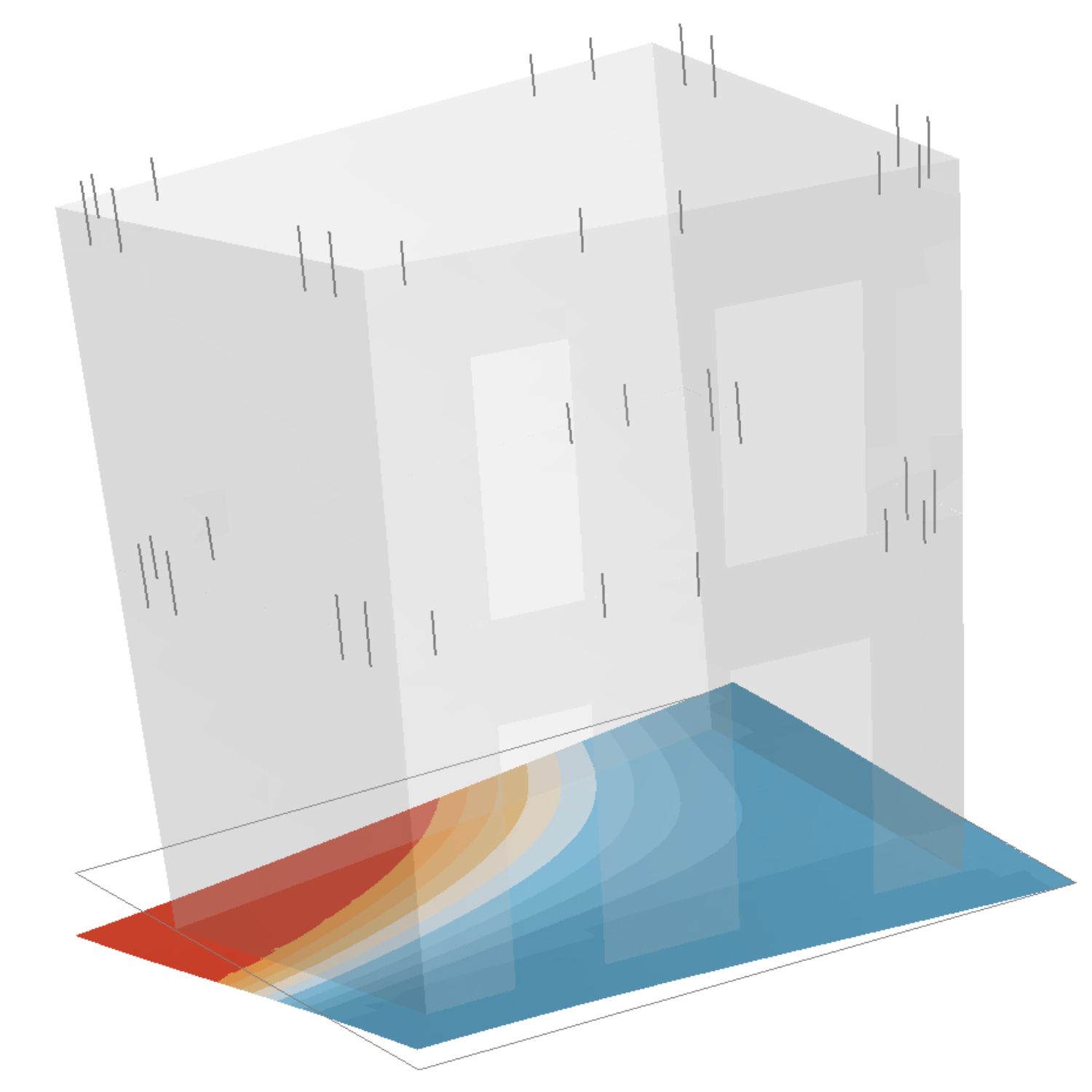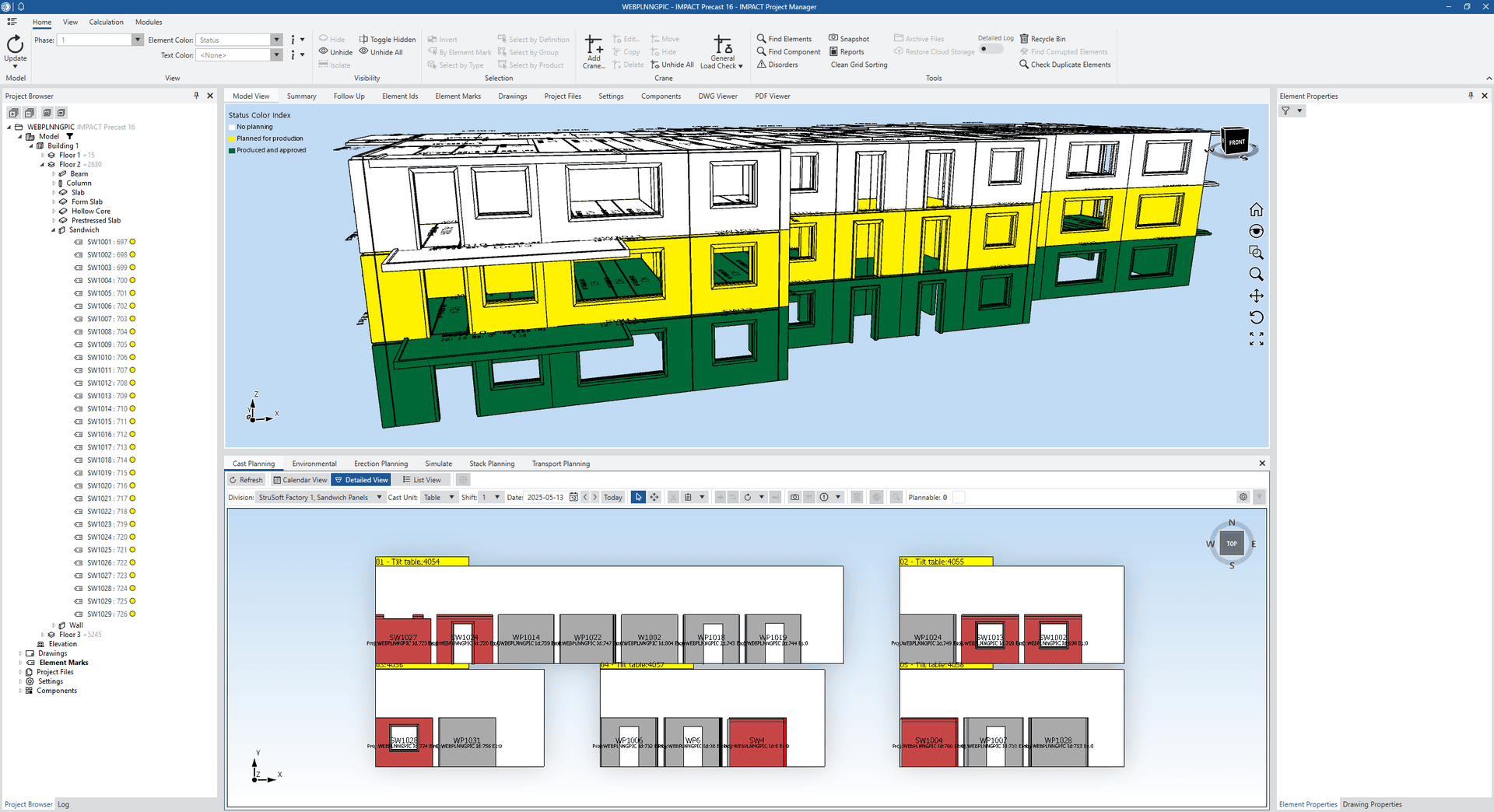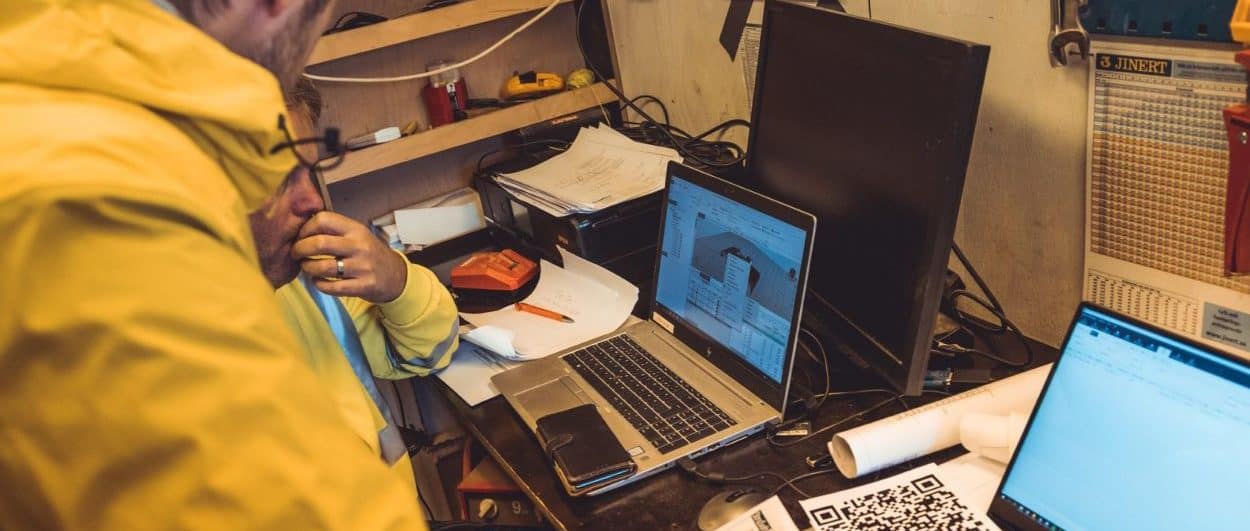Plastic Analysis
Plastic Analysis is a material non-linearity module in FEM-Design that expands the capability of structure analysis and enables accurate and realistic structural analysis without compromise for every user and everyday design projects. It empowers material savings and safety for steel and concrete structures.
For concrete structures, the module uses complex and realistic non-linear hardening and cracked concrete models, including all rebars. For plated steel structures, it enables ultimate non-linear plastic capacity calculations for steel and allows steel yield when the yield limit is reached. Steel bars (beams and columns) get a plastic material model.
RC wall element connections, timber connections, weld connections, and any connections on structure material non-linearity allow plastic behaviour when the capacity is reached. For foundations, this can be used to model the capacity of sub-soil and get accurate foundation subsoil reactions.
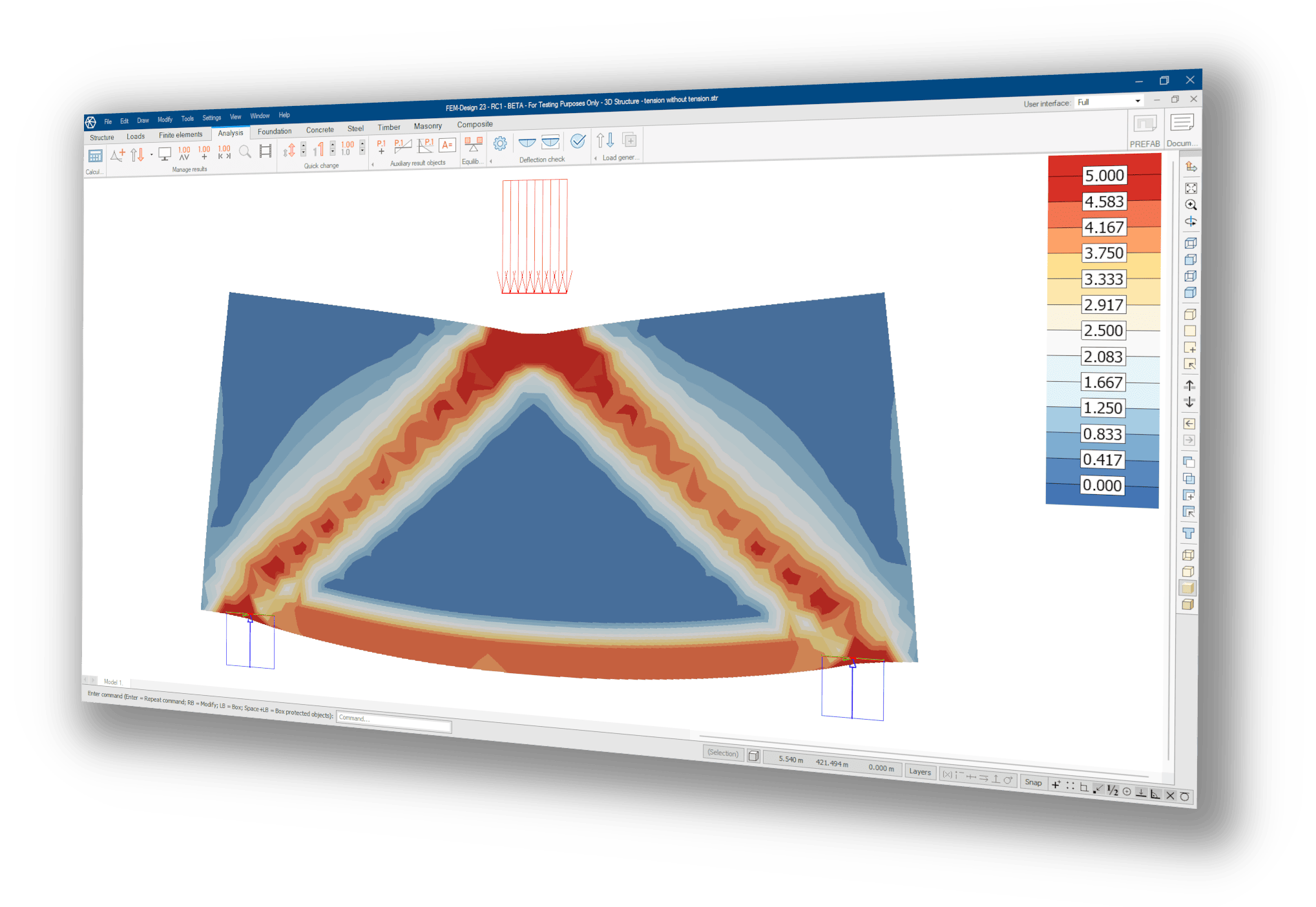
Key Advantages of Plastic Analysis
Reduced Costs
More accurate analysis takes into account full capacity of wall elements and plates and correct optimal load distribution. Cost saving can be up to 30%.
Increased Safety
More accurate analysis models to acquire real behaviour of structure and elements. Load paths are correct and realistic. Also, ultimate strains and realistic crushing models are done by analysis model so rotational capacities and displacement capacities are checked unlike simple hand calculation models.
Productivity
Single model can be used for internal force analysis and rebar and concrete design. One solution for details and analysis.
Increased Safety and Material Savings in Concrete Analysis
Material non-linearity for concrete can be used to perform the total analysis and design of plane-stress structures like walls, shear walls, deep beams with openings and deep foundations. A model can be applied to any slab structure to model non-linear behaviour with cracking and rebar yield. The internal force re-distribution can model behaviour with real rebars. Also, 3D structures like shafts and lateral load-resisting wall systems are good applications for the module. The model includes the ultimate strain check of rebars and concrete, rotational capacities of plates and strain capacities of walls, which can be checked realistically with a 3D model.
Watch the Plastic Analysis for Concrete Shells Overview Video
Tested and Verified Material Model
The concrete material non-linearity includes all possible compression side material non-linearities: stress-strain modelled with parabola and bi-axial behaviour, which approximates Kupfer test data. Tension side behaviour includes multiple tension stiffening models to describe the realistic behaviour of reinforced concrete under tension when cracking occurs with rotating crack theory. Non-linearity also includes complex interaction models, which will take into account the reduction of compressive strength when concrete cracks and plate thickness direction shear stiffness reduction due to cracking.
All these models can be adjusted by the user: for example, the user can exclude the tension capacity of concrete or use the very brittle behaviour of concrete. This means models can be adjusted for ULS ultimate safe-side capacity analysis in extreme cases, but also service limits state performance analysis of any concrete structure with very realistic stiffness distributions.
All rebars, reinforcement meshes and single-addition rebars with anchoring lengths are included in the model. Both concrete and reinforcement have failure models. Concrete failure models can be adjusted, and they take into account the bi-axial nature of the concrete’s ultimate failure in compression.
Bi-axial bending of plate with different rebar ratios in x- and y-directions and different top and bottom rebars. FEM-Design model compared to test data of real plate and also other numerical models.
Analysis Does Not Stop to Yield Limit in Steel Analysis
Material non-linearity introduces a perfectly plastic material model for plated steel structures, beams and columns. The model uses the Von Mises failure theory to take into account the bi-axiality of stresses. The model also includes a failure model for plates, so the ultimate strain can be automatically checked, and complex failure modes can be analysed.
Material non-linearity makes plated structure analysis realistic. Effects of material yielding can be taken into account. Real ultimate capacity can be analysed thanks to the included bi-axial failure model. Also, rotational capacities or tension strain capacities of details can be checked. For beam models, plastic module enables analysis of cross section yielding.
Watch the Plastic Analysis Overview Video
Plastic in Global Structure Analysis
Material non-linearity also helps in the global analysis of structures. All connections, including RC elements, timber elements and beam connections, can be calculated with plastic capacity.
This means the realistic behaviour after reaching the capacity of connections and the full capacity of global structure can be analysed. All this translates to material savings and correct behaviour. Plasticity of surface connections can be used to model the failure of sub-soil after the capacity is reached.
Benefits of Plastic Analysis
Why wait? Download an automated 2 x week free trial of FEM-Design and get started today!
Calculations performed according to:
Euro Code
Belgian National Annex
British National Annex
Danish National Annex
Dutch National Annex
Estonian National Annex
Finnish National Annex
German National Annex
Hungarian National Annex
Latvian National Annex
Norwegian National Annex
Polish National Annex
Romanian National Annex
Spanish National Annex
Swedish National Annex
Turkish Seismic Code
Languages supported:
English
Finnish
French
Dutch
Hungarian
Polish
FEM-Design Wiki
Full details on the Plastic Analysis module and the theory can be found on the FEM-Design Wiki by clicking here.
FEM-Design Blog
From Planning to Transport: See How IMPACT Streamlines Precast Production
Looking to streamline your precast concrete workflow? In our recent webinar, “Precast Production Planning in IMPACT,” we demonstrated how the IMPACT platform simplifies and accelerates every stage of the precast process—from casting and erection planning to transport and quality control. Now, you can catch the full recording and see [...]
Modern Foundation Design Made Simple – Insights from Dennis Kristensen on Simplex Foundation
Structural engineering is constantly evolving, and Simplex Foundation is redefining how professionals approach foundation design. This structural design and analysis software for foundations is backed by decades of expertise and powered by trusted engines like WIN-Statik and DIMENSION. In our conversation with Dennis Kristensen, CEO of [...]
Struggling with planning precast projects in Excel?
With the rise of digitisation; advancements in BIM, many precast businesses have moved to 3D design of their precast concrete projects. However, many factories and project managers are still struggling with planning precast projects in Excel spreadsheets and not taking advantage of the ability to work with specialised software [...]
